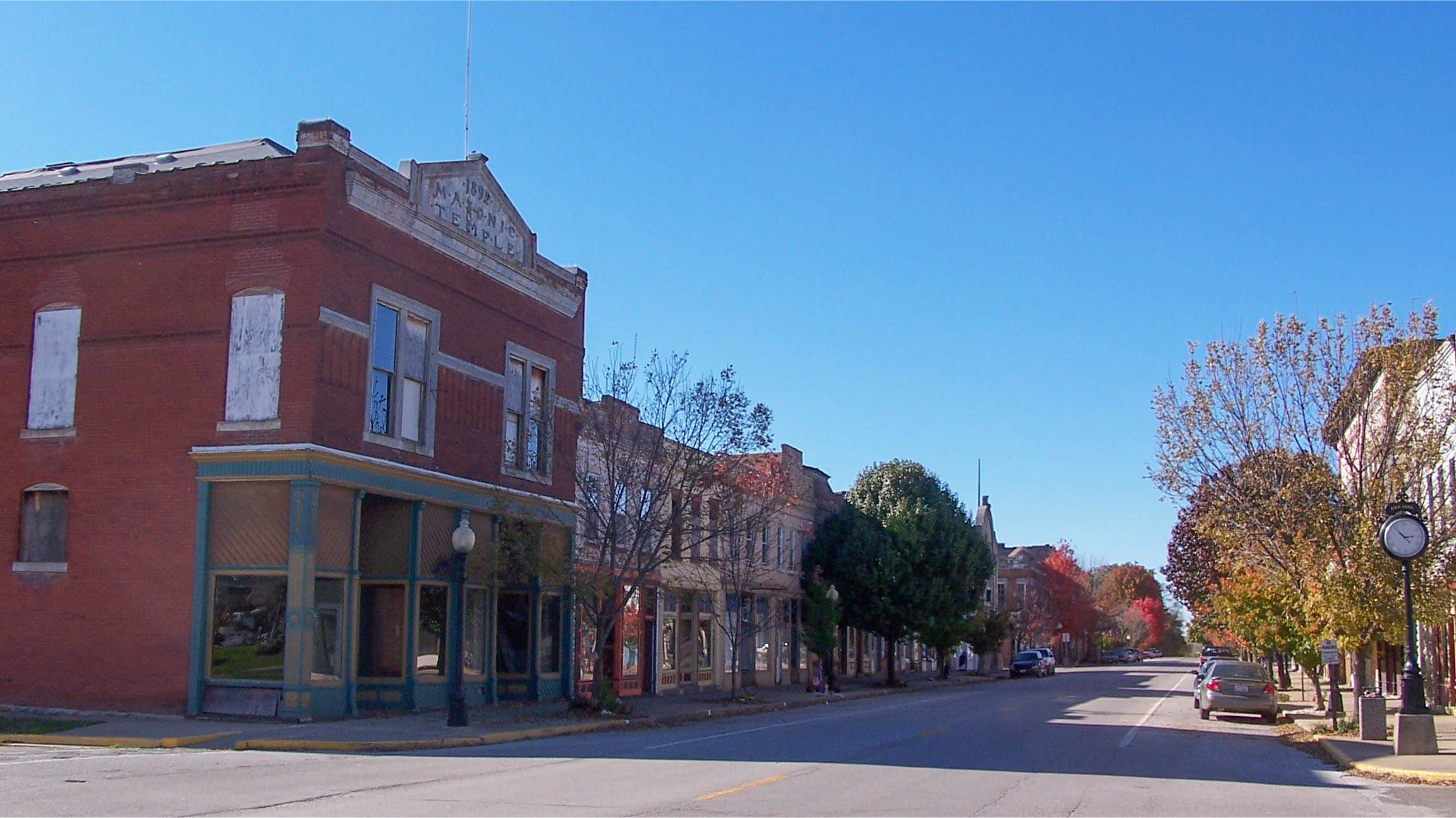Visitors Guide to Nebo
Pike County, Illinois
The town of Nebo sits in one of Pike's most scenic settings, the lower Bay Creek valley, and is almost surrounded by rugged hills. Nebo, was laid out as a railroad town in the early 1870s when the Chicago and Alton Railway laid a line up through Pike County and across the River to Louisiana, MO. Nebo and other towns along the line became important commercial centers during the heyday of the railroads. Freight is still hauled through Nebo by the Gateway Western Railroad.
Nebo’s most important claim to fame involves the first trans-continental flight. In October 1910, publisher William Randolph Hearst offered a prize of $50,000 to the first aviator to cross the United States in an airplane in under 30 days. This challenge was taken up by early aviation pioneer Calbraith (Cal) Rodgers. Rodgers had learned to fly at the Wright Brothers Flying School in Dayton, Ohio. To make journey Rodgers ordered a plane from the Wright Brothers shop, an experimental a Model EX biplane with two large propellers powered by a four-cylinder, thirty-five horsepower engine. In those days there were no airports along the way and no navigation aids to guide the pilot. Rodgers would have to follow railroad tracks and have a ground crew follow him. Because this venture would be expensive Rodgers needed a sponsor. The Armour Company in Chicago was eager to advertise a new grape flavored, five-cents-a-bottle soft drink called Vin Fiz. Armour agreed to cover the costs and pay Rodgers five dollars for every mile he flew if the plane would carry the Vin Fiz advertising.
Rodgers and the newly named Vin Fiz Flyer left Long Island, New York, on September 17, 1911 and after a successful first day, he predicted he would arrive in Chicago within four days. Illinoisans had eagerly awaited Rodgers arrival and the newspapers carried regular reports of his progress and the Vin Fiz Flyer was expected to appear in Springfield at the state fair. But accidents, equipment failures, and weather problems caused numerous delays. Although it soon became apparent that he would never meet the deadline of thirty days, Rodgers was determined to finish the flight. It took Rodgers twenty-seven days before the Vin Fiz Flyer reached Chicago’s Grant Park on October 8th. After stops in Joliet, Peoria, and Springfield Rodgers and the Vin Fiz headed west. The last Illinois stop was at Nebo on October 10th.
On November 5th, forty-nine days after leaving Long Island and having made 68 landings, Rodgers landed in Pasadena, California, missing Hearst's deadline by 19 days. So that he could say he had reached the Pacific Ocean, he took off again on November 12th, to cover the remaining 20 miles to the ocean, only to be forced down twice, once suffering a broken ankle. Finally on December 10th, he landed on to the beach at Long Beach, California, and taxied the Vin Fiz Flyer into the Pacific Ocean. The entire trip of approximately 4,000 miles had taken 84 days, of which only 82 hours were spent in the air. On April 3, 1912, Rodgers was making a test flight when ran into a flock of gulls and he was killed instantly in the crash, not more than a hundred yards on the beach in California where he ended his historic flight. In honor of the historic occasion of the October 10th landing in Nebo Pike County has renamed the main road running from Pearl to Pleasant Hill and through Nebo the Vin Fiz Highway and celebrates the Vin Fiz landing with an annual festival in August.











